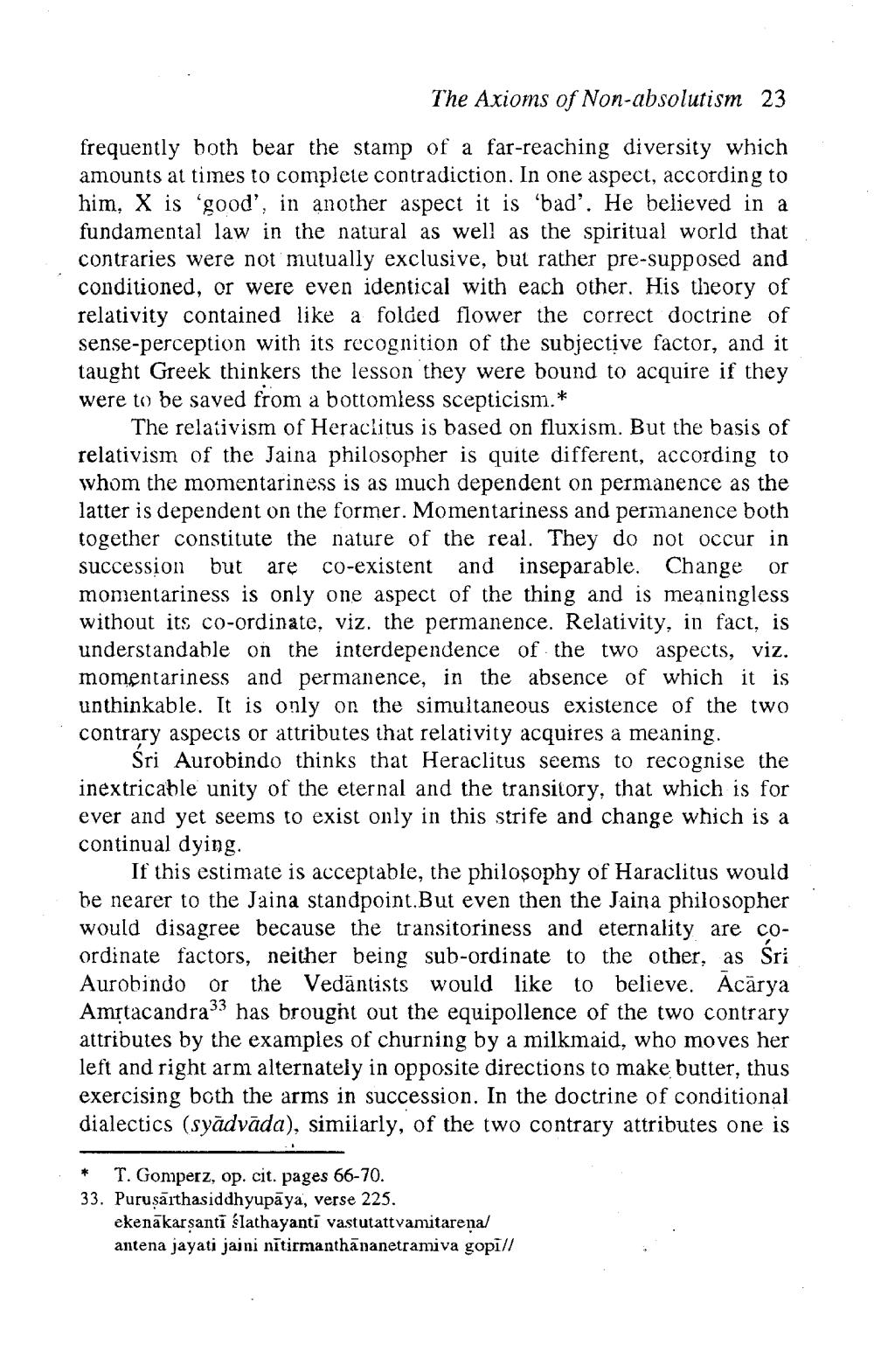________________
The Axioms of Non-absolutism
23
frequently both bear the stamp of a far-reaching diversity which amounts at times to complete contradiction. In one aspect, according to him, X is 'good', in another aspect it is 'bad'. He believed in a fundamental law in the natural as well as the spiritual world that contraries were not mutually exclusive, but rather pre-supposed and conditioned, or were even identical with each other. His theory of relativity contained like a folded flower the correct doctrine of sense-perception with its recognition of the subjective factor, and it taught Greek thinkers the lesson they were bound to acquire if they were to be saved from a bottomless scepticism.*
The relativism of Heraclitus is based on fluxism. But the basis of relativism of the Jaina philosopher is quite different, according to whom the momentariness is as much dependent on permanence as the latter is dependent on the former. Momentariness and permanence both together constitute the nature of the real. They do not occur in succession but are co-existent and inseparable. Change or momentariness is only one aspect of the thing and is meaningless without its co-ordinate, viz. the permanence. Relativity, in fact, is understandable on the interdependence of the two aspects, viz. momentariness and permanence, in the absence of which it is unthinkable. It is only on the simultaneous existence of the two contrary aspects or attributes that relativity acquires a meaning
Sri Aurobindo thinks that Heraclitus seems to recognise the inextricable unity of the eternal and the transitory. that which is for ever and yet seems to exist only in this strife and change which is a continual dying.
If this estimate is acceptable, the philosophy of Haraclitus would be nearer to the Jaina standpoint.But even then the Jaina philosopher would disagree because the transitoriness and eternality are coordinate factors, neither being sub-ordinate to the other. Aurobindo or the Vedāntists would like to believe. Ācārya Amstacandra33 has brought out the equipollence of the two contrary attributes by the examples of churning by a milkmaid, who moves her left and right arm alternately in opposite directions to make butter, thus exercising both the arms in succession. In the doctrine of conditional dialectics (syadvāda), similarly, of the two contrary attributes one is
Sri
* T. Gomperz, op. cit. pages 66-70. 33. Puruşāıthasiddhyupāya, verse 225.
ekenā karsanti slathayanti vastutattvamitarena/ antena jayati jajni nītirmanthānanetramiva gopill




